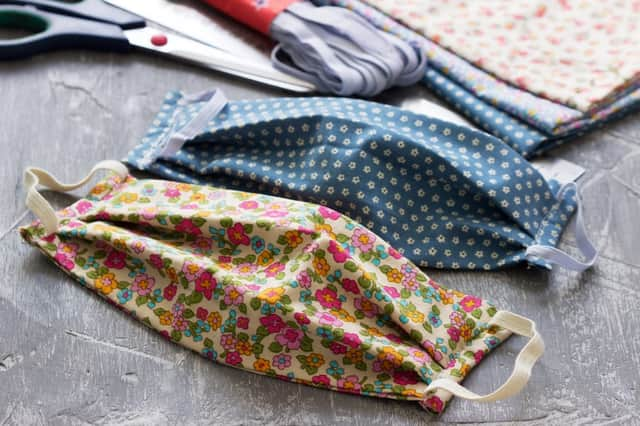Some homemade face masks do not offer enough protection - here's what to be aware of


Face coverings in shops and on public transport are now mandatory in England and Scotland, as well as being compulsory on public transport in Northern Ireland and from 27 July in Wales.
Members of the public are wearing a range of masks, including ones that are homemade. However, some homemade masks offer more protection than others.
Advertisement
Hide AdAdvertisement
Hide Ad‘At least two layers’
Experts initially recommended wearing masks which offered three layers of protection, but as many people are now making and wearing their own homemade masks, they might not be as protective as they should be.
New research suggests that homemade face coverings need to be at least two layers and preferably three, in order to help stop the spread of coronavirus.
The recent study, which is published in the journal Thorax, looks at three types of masks, tested by experts from the University of New South Wales in Sydney, Australia.
Their one-layer face covering was made using material made out of a cotton t-shirt, with the two-layer covering prepared by sewing two strips together. The third face covering tested was a surgical mask.
Advertisement
Hide AdAdvertisement
Hide AdThe study looked at the droplets and aerosols expelled during speaking, coughing and sneezing, while wearing the different types of mask.
“From the captured video it can be observed that, for speaking, a single-layer cloth face covering reduced the droplet spread but a double-layer covering performed better,” the research explains.
Two layers were found to be “significantly better at reducing the droplet spread caused by coughing and sneezing”, with researchers explaining that three layers would be even better.
Using fabric masks
The World Health Organization (WHO) is currently studying and encouraging research on the science of masks.
Advertisement
Hide AdAdvertisement
Hide AdNew research findings identified the following preferable types of fabrics, number of layers and the composition of a non-medical, fabric mask:
- an inner layer of absorbent material such as cotton
- a middle layer of non-woven material such as polypropylene
- an outer layer of non-absorbent material, such as polyester or polyester blend
However, the WHO explains, “Remember, the use of a fabric mask alone is not sufficient to provide an adequate level of protection. Maintain a minimum physical distance of at least 1 metre from others and frequently clean your hands.”
Gov.uk explains that a face covering should:
- cover your nose and mouth while allowing you to breathe comfortably
- fit comfortably but securely against the side of the face
- be secured to the head with ties or ear loops
- be made of a material that you find to be comfortable and breathable, such as cotton
- ideally include at least two layers of fabric (the World Health Organisation recommends three depending on the fabric used)
- unless disposable, it should be able to be washed with other items of laundry according to fabric washing instructions and dried without causing the face covering to be damaged